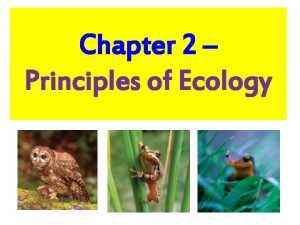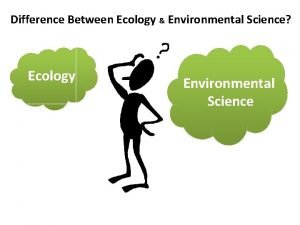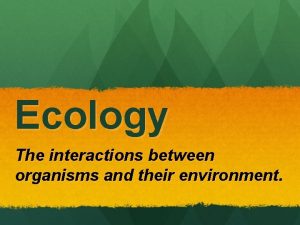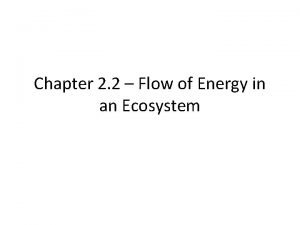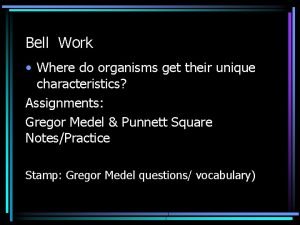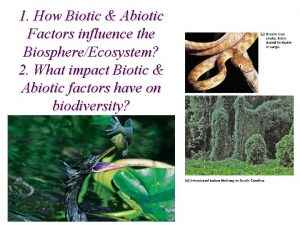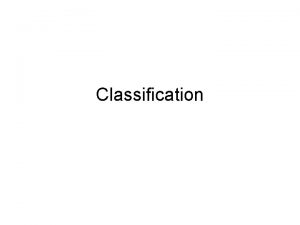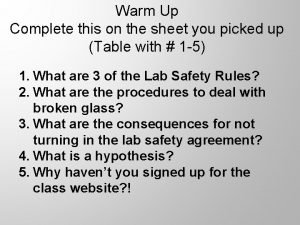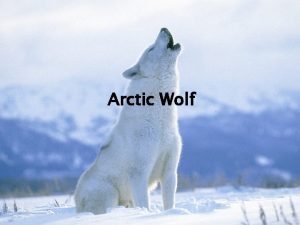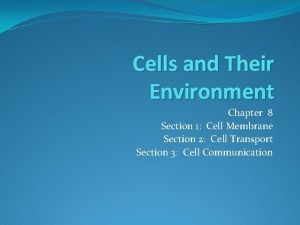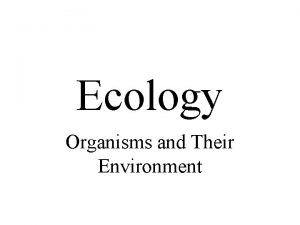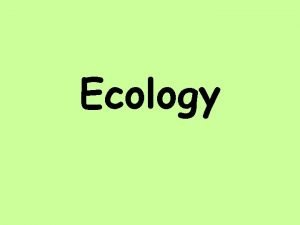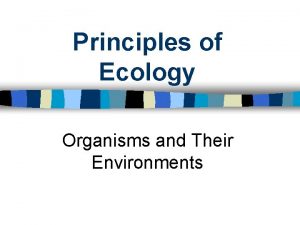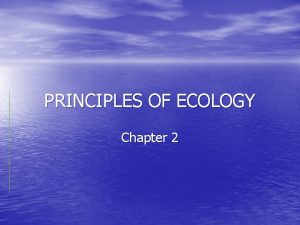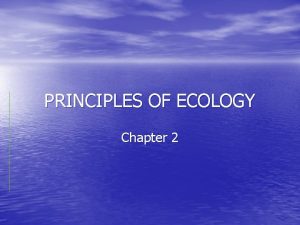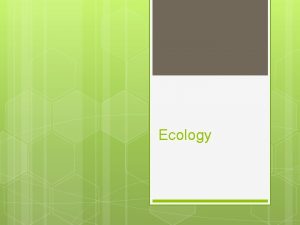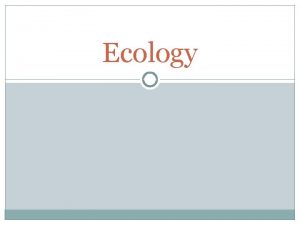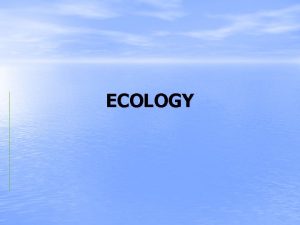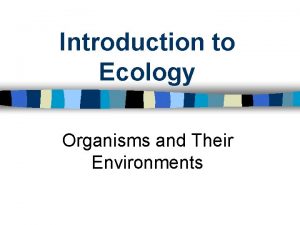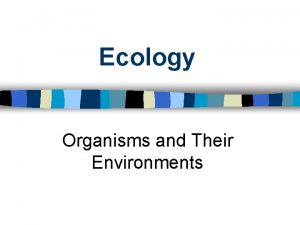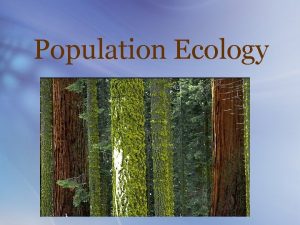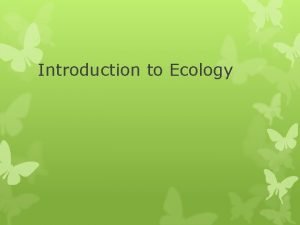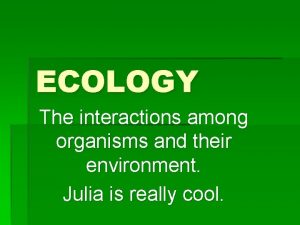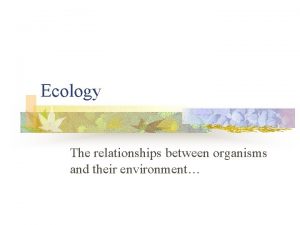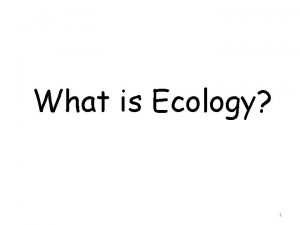PRINCIPLES OF ECOLOGY Chapter 2 Organisms Their Environment























- Slides: 23

PRINCIPLES OF ECOLOGY Chapter 2

Organisms & Their Environment Ch. 2, Sec. 1

What is Ecology? • Ecology = study of interactions between organisms & their environment

Think, Pair, Share 1. Explain the difference between a food chain and a food web? 2. Draw an example of each.

• Disruptions to the environment can ripple throughout the entire ecosystem

Biosphere • Biosphere = parts of Earth and its atmosphere that support life, from the sky down to the bottom of the ocean

Living vs. Nonliving • Biotic Factors • = the living parts of an ecosystem Abiotic Factors = the nonliving parts of an ecosystem (sun, temperature, p. H, gasses, water) that are part of an organism’s life

Think, Pair, Share 3. List the levels of organization starting with atoms and ending with organism.

Levels of Organization 12. Biosphere – portion of the Earth that supports living things

11. Ecosystem = the biotic & abiotic parts of an environment found in a particular place – The biosphere is made up of many different ecosystems

10. Communities = all the interacting living organisms in an area, all the different species

9. Populations = all members of the same species living in one place, at one time

Organism = the individual organism

Organisms in Ecosystems • Habitat = the place where an organism lives out its life • Niche = all strategies & adaptations a species uses in its environment; an species’ role – What food they eat – What kind of shelter used – Where they reproduce

• Having a specific role in an environment helps reduce competition

Think, Pair, Share 4. Write an example of a parasitic relationship.

Survival Relationships (2 kinds Symbiosis & Predation) A. Symbiosis = organisms living closely together; 3 types of symbiosis

• 1. Mutualism = 2 species of organisms benefit from each other

• 2. Commensalism = one species benefits & the other is neither harmed nor benefited

• 3. Parasitism = one species benefits at the expense of another species

• B. Predation = a predator eats another organism for food

• http: //www. cstephenmurray. com/onlinequ izes/biology/Ecology/typesofinteractionsex amples. htm

Practice • Cowbirds lay their eggs in the nests of other birds and allow them to raise their chick usually at the expense of the offspring of the other species. • What would happen to a forest community if the cowbird population increased?
 Principles of ecology chapter 2 answer key
Principles of ecology chapter 2 answer key Principles of ecology organisms and their relationships
Principles of ecology organisms and their relationships Levels of organization in the biosphere
Levels of organization in the biosphere Chapter 2 section 1 organisms and their relationships
Chapter 2 section 1 organisms and their relationships Principles of ecology chapter 2
Principles of ecology chapter 2 Principles of ecology chapter 2 section 1 answer key
Principles of ecology chapter 2 section 1 answer key Chapter 2 section 1 organisms and their relationships
Chapter 2 section 1 organisms and their relationships Why do organisms interact with other organisms
Why do organisms interact with other organisms Unicellular vs multicellular activity
Unicellular vs multicellular activity Chapter 1 science and the environment
Chapter 1 science and the environment Ecological niche
Ecological niche Difference between environmental science and ecology
Difference between environmental science and ecology Organisms and the environment
Organisms and the environment Chapter 4 section 1 population dynamics answer key
Chapter 4 section 1 population dynamics answer key Principles of ecology 2 flow of energy in an ecosystem
Principles of ecology 2 flow of energy in an ecosystem Where do organisms get their traits?
Where do organisms get their traits? Where do all organisms get their energy
Where do all organisms get their energy 5 levels of organisms
5 levels of organisms Process of grouping things based on their similarities
Process of grouping things based on their similarities Organisms that make their own food
Organisms that make their own food Financial environment in business environment
Financial environment in business environment How do arctic wolves adapt to their environment
How do arctic wolves adapt to their environment Cells and their environment worksheet answers
Cells and their environment worksheet answers The hohokam and anasazi achievements
The hohokam and anasazi achievements






